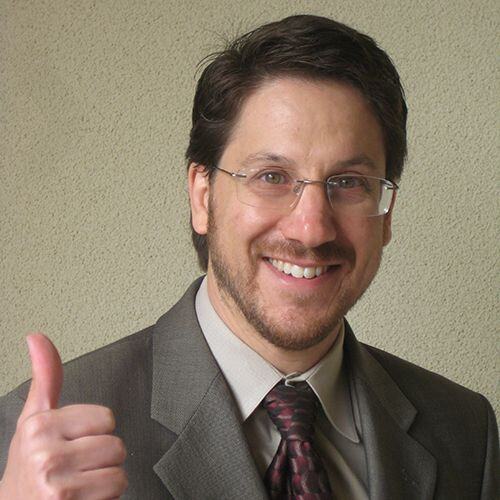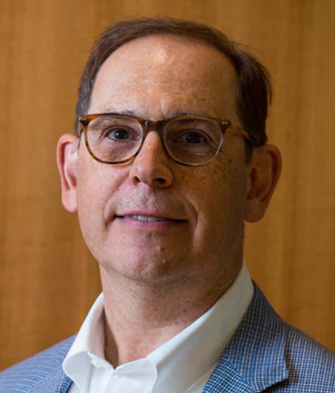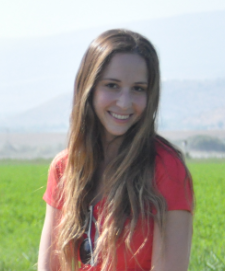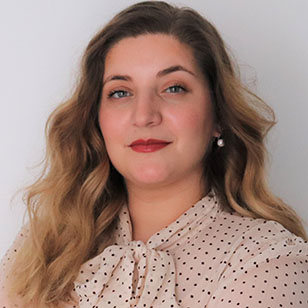Advances in Medicinal Chemistry: From Bench to Bedside focuses on the innovative strategies and methodologies driving the discovery and development of new therapeutics. This session highlights the critical role of
medicinal chemistry in transforming early-stage compounds into clinically viable drug candidates. Topics include lead identification, scaffold optimization, and structure-activity relationship (SAR) studies aimed at improving potency, selectivity, and pharmacokinetic properties. The session also explores the integration of synthetic chemistry with modern tools like
computational modeling,
green chemistry approaches, and translational research. By showcasing successful case studies and addressing challenges such as metabolic stability and bioavailability, this session provides a comprehensive view of how medicinal chemistry bridges the gap between laboratory research and real-world therapeutic applications.
• Lead compound discovery and optimization
• Innovative synthetic strategies for drug-like molecules
• Targeted covalent inhibitors and PROTACs
• Bridging in vitro efficacy with in vivo performance
• Medicinal chemistry contributions to orphan and rare disease drugs
Structure-Based Drug Design and Molecular Docking is a cornerstone session in
modern drug discovery that focuses on the use of
three-dimensional structural information of biological targets to design and optimize drug candidates. This approach leverages crystallographic, cryo-EM, or NMR-derived protein structures to guide the identification of small molecules that can interact specifically and effectively with target sites.
Molecular docking plays a key role by predicting the preferred orientation and binding affinity of these molecules within the active site of the target. This session delves into the latest advances in docking algorithms, scoring functions, and validation techniques, as well as their applications in hit identification, lead optimization, and virtual screening. Case studies illustrating the successful application of structure-based methods in designing inhibitors for kinases, GPCRs, and viral enzymes will be featured. Emphasis will also be placed on challenges such as protein flexibility, water-mediated interactions, and the integration of molecular dynamics simulations for more accurate predictions.
• Recent Advances in Molecular Docking Algorithms
• Scoring Functions: Accuracy, Challenges, and Improvements
• Structure-Guided Drug Design Using X-ray, NMR, and Cryo-EM Data
• Virtual Screening for Hit Identification and Lead Optimization
AI & Machine Learning in Drug Discovery focuses on the integration of advanced algorithms to accelerate and optimize the drug development process. This session highlights how
AI models aid in target prediction,
virtual screening, compound generation, and ADMET profiling. It also explores deep learning, generative models, and data-driven approaches that improve decision-making in medicinal chemistry. Real-world case studies and challenges like data quality and model interpretability will be discussed.
• Deep learning models for compound property prediction
• De novo molecular generation using AI
• Predictive analytics for toxicity and efficacy
Quantum Chemistry and Molecular Simulations explores how quantum mechanical methods and
atomistic simulations are applied to understand and predict molecular behavior in
drug discovery. This session highlights techniques such as
Density Functional Theory (DFT), QM/MM approaches, and
molecular dynamics simulations to study reaction mechanisms, binding affinities, and electronic properties. It emphasizes the role of simulations in refining lead compounds, modeling protein-ligand interactions, and predicting molecular stability. Discussions will also cover the integration of these methods with AI and high-performance computing to enhance accuracy and efficiency in drug design.
• QM/MM hybrid approaches in drug design
• Free energy calculations for ligand optimization
• Molecular dynamics for binding affinity estimation
Fragment-Based and Ligand-Based Design focuses on two powerful strategies used to identify and optimize drug candidates. Fragment-based design involves screening low-molecular-weight chemical fragments that bind weakly to a target and then growing or linking them to create potent inhibitors. Ligand-based design, on the other hand, relies on knowledge of known active compounds to build predictive models such as QSAR and
pharmacophores. This session covers methods for fragment screening, hit optimization, and ligand-based virtual screening, highlighting how both approaches complement each other in accelerating lead discovery and improving drug-like properties.
• Virtual screening of fragment libraries
• Pharmacophore modeling and 3D-QSAR techniques
• Scaffold hopping and bioisosteric replacements
Computational Drug Discovery and Design focuses on the use of in
silico methods to accelerate and refine the process of developing new therapeutics. This session covers key techniques such as
molecular docking, pharmacophore modeling, QSAR, molecular dynamics simulations, and
virtual screening. By integrating structural data, cheminformatics, and predictive algorithms, computational approaches help identify promising compounds, optimize leads, and reduce experimental costs. The session also explores how these tools are applied in real-world case studies to enhance decision-making in early-stage drug discovery.
• In silico screening and molecular docking techniques
• Structure-activity relationship (SAR) and QSAR modeling
• Free energy calculations and molecular dynamics simulations
Cheminformatics and Big Data in Drug Design highlights the critical role of data-driven approaches in modern pharmaceutical research. This session focuses on the use of cheminformatics tools to manage, analyze, and visualize vast chemical and biological datasets for informed decision-making in drug discovery. Topics include
molecular descriptor analysis, compound library design, similarity searching, and data mining techniques. The integration of big data analytics with AI and machine learning enables prediction of drug properties, identification of novel targets, and acceleration of lead optimization. Real-world applications and challenges in data quality, standardization, and interoperability will also be discussed.
• Data mining in compound libraries
• Chemical space navigation and visualization
• Integration of multi-omics datasets
Computational Approaches for Target Identification and Validation explores how in silico tools are revolutionizing the early stages of
drug discovery by uncovering and confirming viable biological targets. This session covers methods such as network
pharmacology, systems biology modeling,
reverse docking, and machine learning-based target prediction. These approaches help identify disease-relevant proteins, predict drug-target interactions, and assess target druggability with greater speed and accuracy. Emphasis is placed on integrating multi-omics data, pathway analysis, and
virtual screening to streamline validation processes and reduce experimental costs.
• Network pharmacology and systems biology
• In silico off-target prediction
• Multi-target drug design
Innovations in Molecular Visualization and Virtual Reality Tools focuses on the cutting-edge technologies that enhance how researchers interact with and understand molecular structures. This session highlights advancements in 3D visualization platforms, interactive modeling, and virtual reality (VR) environments that allow immersive exploration of protein-ligand interactions, binding sites, and conformational changes. These tools improve the accuracy of molecular design, foster intuitive understanding of complex biological systems, and support collaborative drug discovery efforts. Applications in education, real-time docking analysis, and structure-based design will also be discussed.
• Immersive molecular modeling environments
• 3D visualization for structure-guided design
• HCI (Human-Computer Interaction) in medicinal chemistry
Peptide and Macrocycle Drug Design explores the growing field of designing therapeutics based on peptides and cyclic molecules, which offer high specificity and affinity for challenging biological targets. This session highlights strategies for improving the stability, permeability, and bioavailability of
peptide-based drugs, as well as computational methods for modeling their complex structures. Topics include
macrocyclization techniques, structure-activity relationships, and the design of constrained peptides for targeting
protein–protein interactions. Advances in synthetic approaches and delivery systems will also be discussed, showcasing the therapeutic potential of these versatile molecules.
• Computational strategies for peptide optimization
• Cyclic peptide modeling and docking
• Challenges in cell permeability and stability
In Silico ADME-Tox Prediction and Optimization focuses on computational methods used to evaluate the Absorption, Distribution, Metabolism, Excretion, and Toxicity (ADME-Tox) profiles of drug candidates early in the discovery process. This session highlights tools and models that predict pharmacokinetic behavior, potential toxicity, and safety risks, helping to minimize late-stage failures. Topics include
QSAR models, machine learning-based toxicity predictors, and
virtual screening filters for drug-likeness. By integrating these in silico approaches, researchers can optimize compound properties more efficiently, reduce animal testing, and accelerate the development of safer, more effective drugs.
• Tools and models for predicting pharmacokinetics
• Early detection of toxicity through simulations
• Integration into early-stage drug development
Cloud Computing and Open Science Platforms in CADD explores how cloud-based technologies and collaborative platforms are transforming
Computer-Aided Drug Design (CADD). This session highlights the use of scalable computing resources for high-throughput
virtual screening,
molecular simulations, and
AI-driven modeling. It also emphasizes the role of open-access databases, shared tools, and community-driven initiatives in accelerating innovation and enhancing reproducibility. Topics include cloud-enabled
molecular docking, data sharing standards, and collaborative research environments that break down barriers between academia, industry, and global research communities.
• Collaborative platforms for molecular design
• High-throughput screening in the cloud
• Data sharing and reproducibility challenges
Synthetic and Green Medicinal Chemistry focuses on
innovative and sustainable approaches to the design and synthesis of
drug molecules. This session highlights advances in synthetic methodologies that improve efficiency, selectivity, and scalability while minimizing environmental impact. Topics include eco-friendly reaction conditions, solvent-free processes, biocatalysis, and the use of renewable feedstocks. Emphasis is placed on integrating green chemistry principles into medicinal chemistry workflows to reduce waste, enhance safety, and support sustainable pharmaceutical development without compromising therapeutic effectiveness.
• Eco-friendly synthesis of drug candidates
• Biocatalysis in pharmaceutical chemistry
• Late-stage functionalization techniques
Target Identification and Validation is a critical phase in the drug discovery process that focuses on recognizing and confirming biological molecules—such as proteins, genes, or pathways—that are directly involved in disease progression. This session explores both experimental and computational strategies for identifying potential drug targets and validating their relevance and drug ability. Topics include
genomics and
proteomics approaches, CRISPR-based validation, RNA interference, bioinformatics tools, and disease pathway analysis. Emphasis is placed on ensuring that selected targets are not only biologically significant but also therapeutically actionable, thereby reducing the risk of failure in later drug development stages.
• Computational approaches for target prediction
• Network-based drug-target interaction studies
• Drug repurposing and repositioning strategies
Neuropharmacology and
CNS Drug Design focuses on the discovery and development of therapeutics targeting the central nervous system (CNS), addressing complex
neurological and
psychiatric disorders. This session highlights the challenges of designing drugs that can cross the blood-brain barrier, maintain CNS selectivity, and minimize
neurotoxicity. Topics include neuroreceptor targeting, modulation of neurotransmitter systems, computational CNS drug modeling, and strategies to improve brain bioavailability. Emphasis is placed on innovative approaches for treating conditions such as Alzheimer’s, Parkinson’s, depression, and epilepsy, with insights into both small molecules and biologics in CNS therapeutics.
• Blood-brain barrier modeling and prediction
• Design of CNS-active ligands
• CNS toxicity profiling through computational tools
Peptide and Nucleic Acid Therapeutics focuses on the design and development of biologically inspired drugs that target diseases at the molecular level with high specificity. This session explores the therapeutic potential of peptides, antisense oligonucleotides, siRNA, mRNA, and aptamers in treating a wide range of conditions, including
genetic disorders,
cancer, and
infectious diseases. Key topics include strategies to enhance stability, delivery systems to improve cellular uptake, and chemical modifications to boost efficacy and reduce immunogenicity. Advances in synthesis, formulation, and regulatory considerations will also be discussed, highlighting the growing role of these molecules in next-generation therapeutics.
• Design and modification of therapeutic peptides
• RNA-targeted drug design and antisense strategies
• Delivery systems and formulation innovations
Case Studies in
Drug Discovery and Development provides real-world insights into the journey of transforming a scientific idea into an approved therapeutic. This session showcases detailed examples of successful
drug discovery projects, highlighting key decision points, challenges encountered, and strategies that led to breakthrough outcomes. Topics include target selection, lead optimization, preclinical testing, clinical trial design, and regulatory navigation. By analyzing both successes and failures, participants gain a deeper understanding of the multidisciplinary efforts, timelines, and innovations required to bring effective and safe drugs to market.
• Success stories in medicinal chemistry and CADD
• Failures and lessons learned in lead optimization
• Industry-academia collaboration models
Molecular Dynamics and Free Energy Calculations focus on simulating the physical movements of atoms and molecules over time to gain insights into biological processes and drug-target interactions at the atomic level. This session explores how molecular dynamics (MD) helps predict conformational changes, binding modes, and stability of protein-ligand complexes. Free energy calculations, including MM-PBSA, FEP, and thermodynamic integration, are highlighted for their role in accurately estimating binding affinities and guiding lead optimization. Emphasis is placed on the integration of these techniques with experimental data and their application in rational drug design, helping researchers better understand molecular behavior in dynamic biological environments.
• Principles and Applications of Molecular Dynamics (MD) Simulations
• Force Fields and Parameterization in MD
• Conformational Sampling and Protein Flexibility Analysis
Ligand-Based Drug Design and Virtual Screening focuses on using information from known bioactive compounds to identify and design
new drug candidates without requiring the target’s 3D structure. This session highlights key techniques such as
Quantitative Structure-Activity Relationship (QSAR) modeling,
pharmacophore generation, and molecular similarity analysis to predict the activity of novel molecules.
Virtual screening of large compound libraries based on ligand features enables rapid hit identification and prioritization. Emphasis is placed on the integration of machine learning, cheminformatics tools, and experimental data to enhance accuracy and reduce false positives in the drug discovery pipeline.
• Principles of Ligand-Based Drug Design (LBDD)
• Pharmacophore Modeling and 3D Alignment Techniques
• Quantitative Structure-Activity Relationship (QSAR) Models
Modern Strategies in Lead Identification and Optimization focuses on innovative approaches used to discover and refine chemical compounds with therapeutic potential. This session explores how advances in high-throughput screening, fragment-based
drug discovery, and computational modeling have accelerated the identification of initial hits. It also delves into lead optimization techniques such as structure-activity relationship (SAR) analysis, bio isosteric replacement, and property-based design to enhance potency, selectivity, and drug-like properties. Emphasis is placed on integrating multidisciplinary tools, including AI, structural biology, and cheminformatics, to streamline the path from hit to high-quality clinical candidate.
• High-Throughput and Fragment-Based Screening Techniques
• Structure-Activity Relationship (SAR) and Lead Refinement
• Bioisosterism and Scaffold Hopping in Lead Optimization








